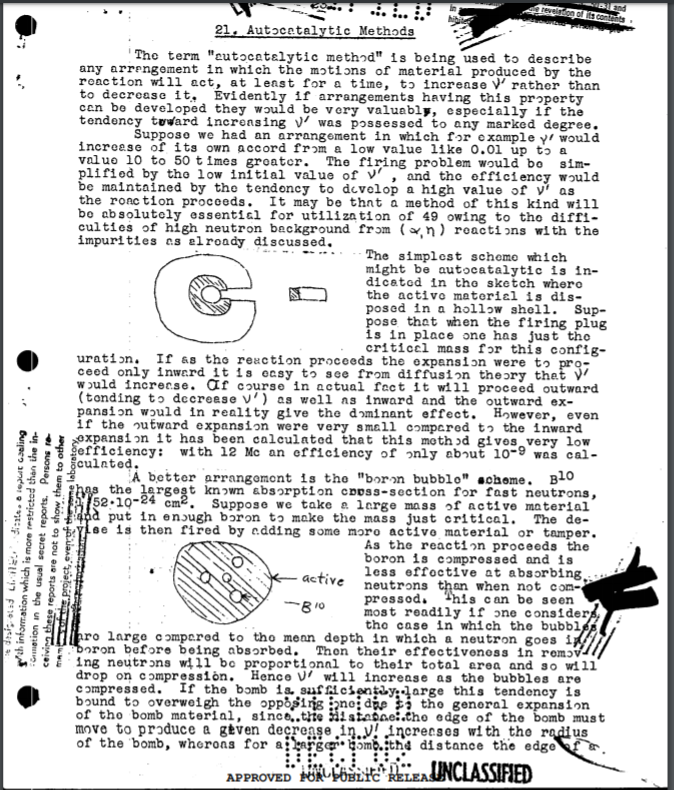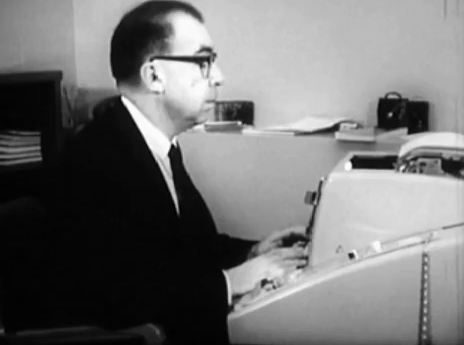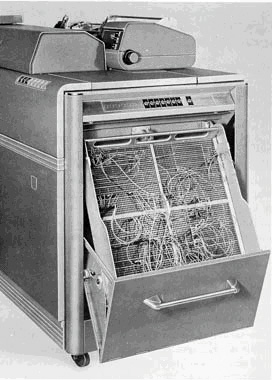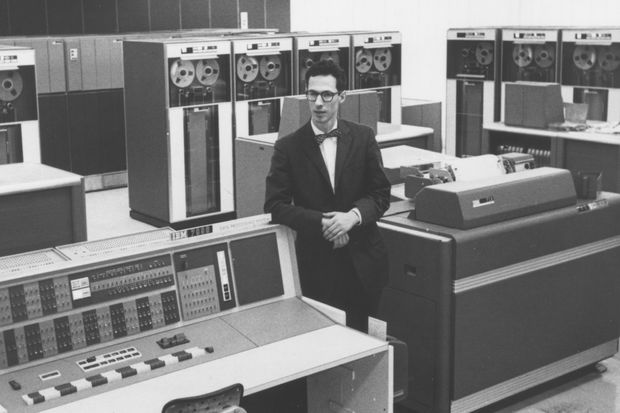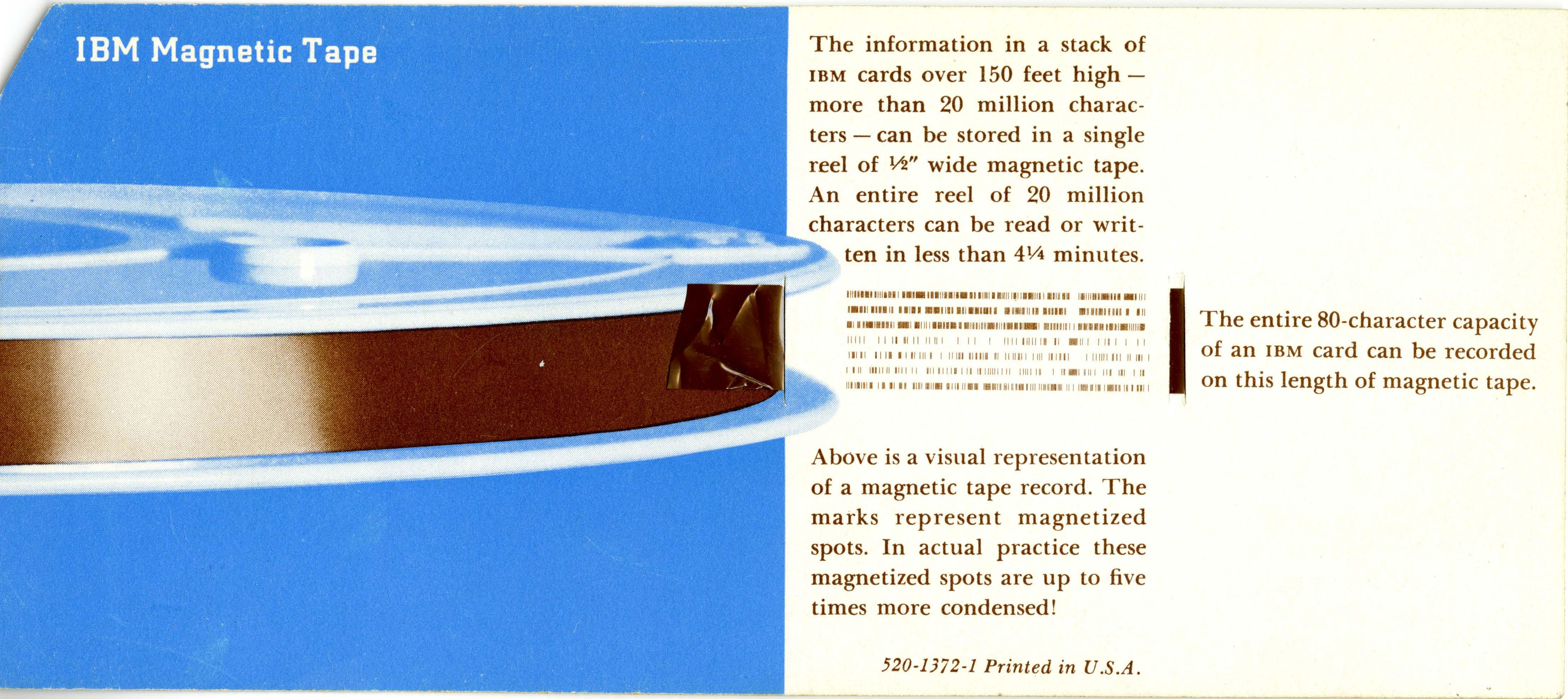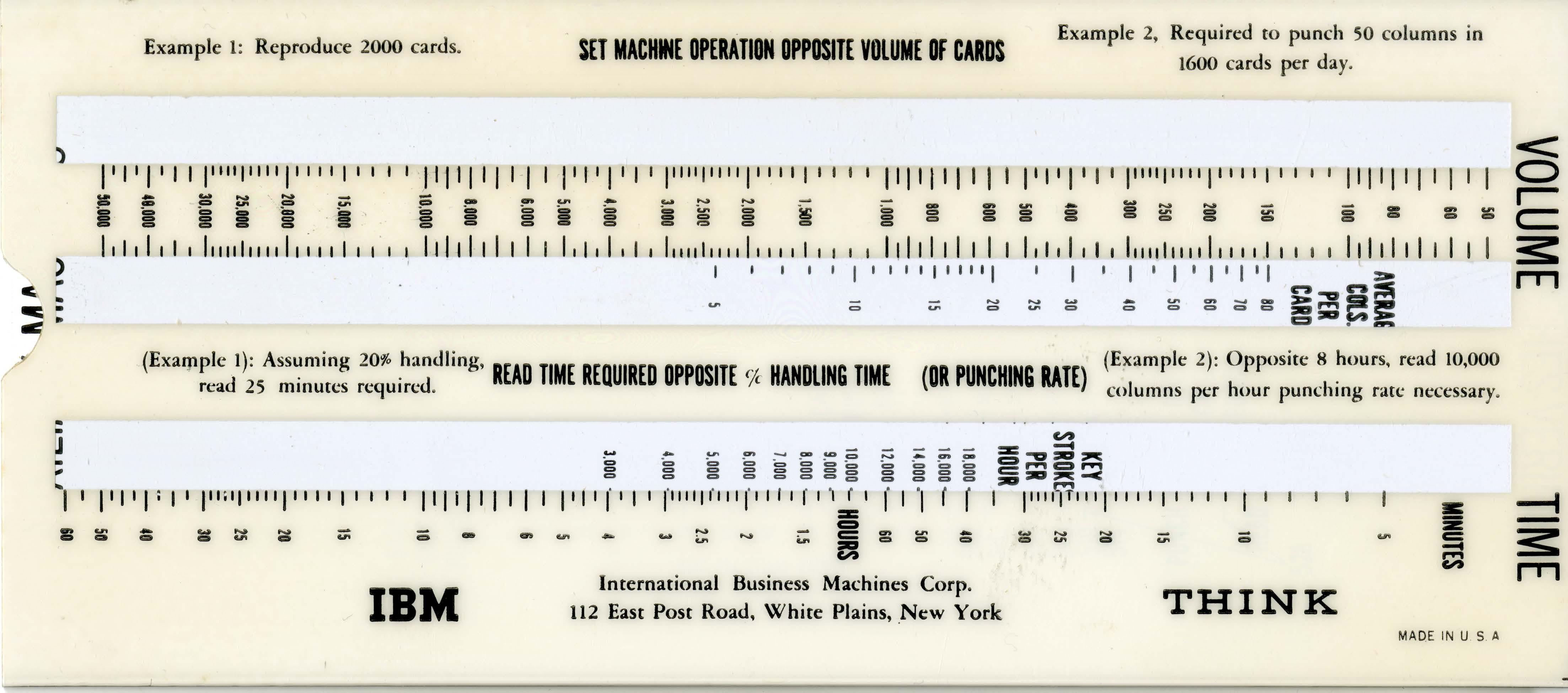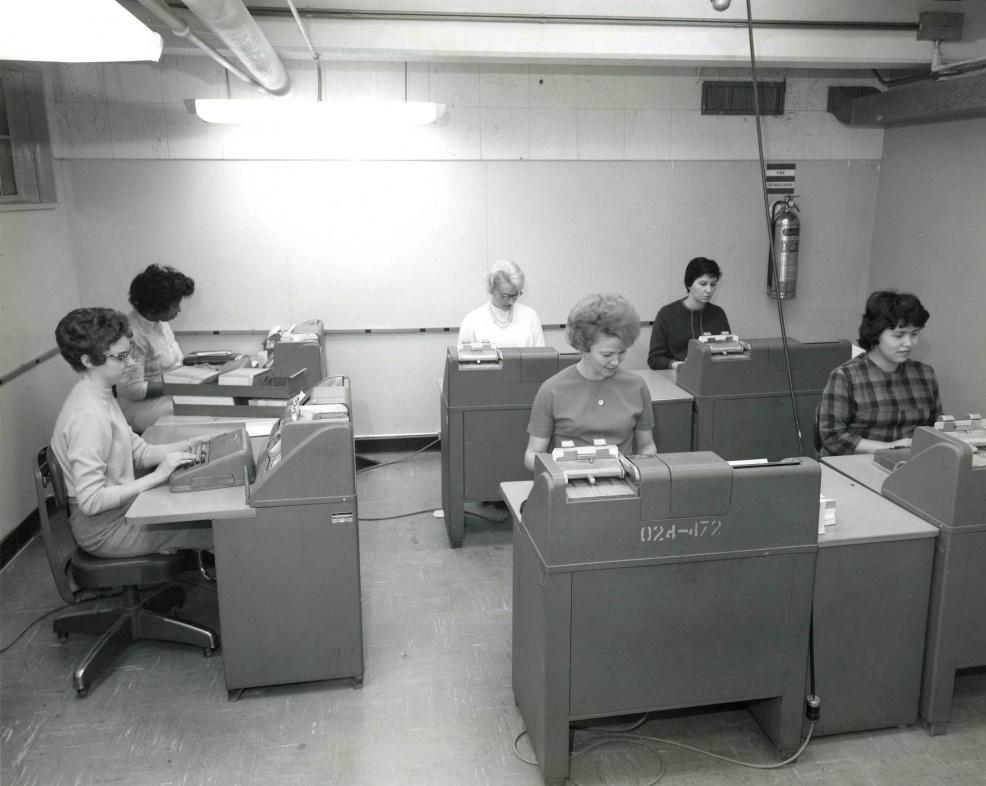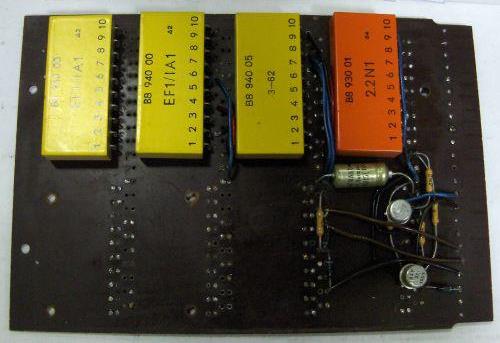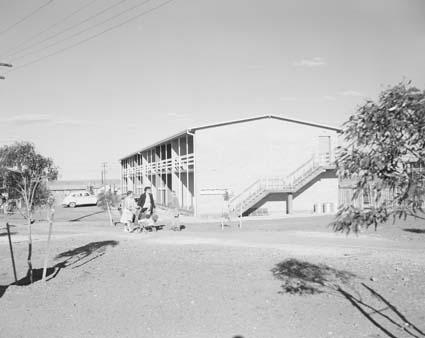
by Victoria Lucas
OK, kiddies, the word for today is ARPANET. Well, yes, good point, it’s not a word, is it? It’s an acronym jammed into an abbreviation. But a juicy one.
I found out what it means because Mel (my husband) and I have these friends in Orinda, California (a town east of Berkeley, nice place). Sharon is more of a stand-up comedian than a housewife, who uses her housewifery–-and sometimes herself–-as the butt of her jokes. Dick Karpinski is a fuzzy bear of a man who is the first computer programmer I ever met. We don’t get to their place too often, since it’s off our beaten track between SF/Berkeley and Fortuna that we usually run on the weekends and holidays (or when neither of us has an active temp job in the Eureka area).
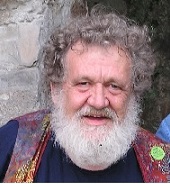
Richard Karpinski works for the University of California at San Francisco, supporting users of the IBM 360 and other tasks
At a recent visit, Dick was quite excited, and Sharon was complaining about her “three years of back ironing.” I don’t have much to say about the ironing, but once Dick had explained to me the reason for his excitement I admitted to some buoyancy myself. I wonder how you will feel about it.
With its initial transmission in October last year, ARPANET (Advanced Research Projects Agency Network) is the first large-scale, general-purpose computer network to link different kinds of computers together without a direct connection. Not only that, but different kinds of networks are coming online following this one. But who cares, right? I mean who of us has ever even seen a computer?
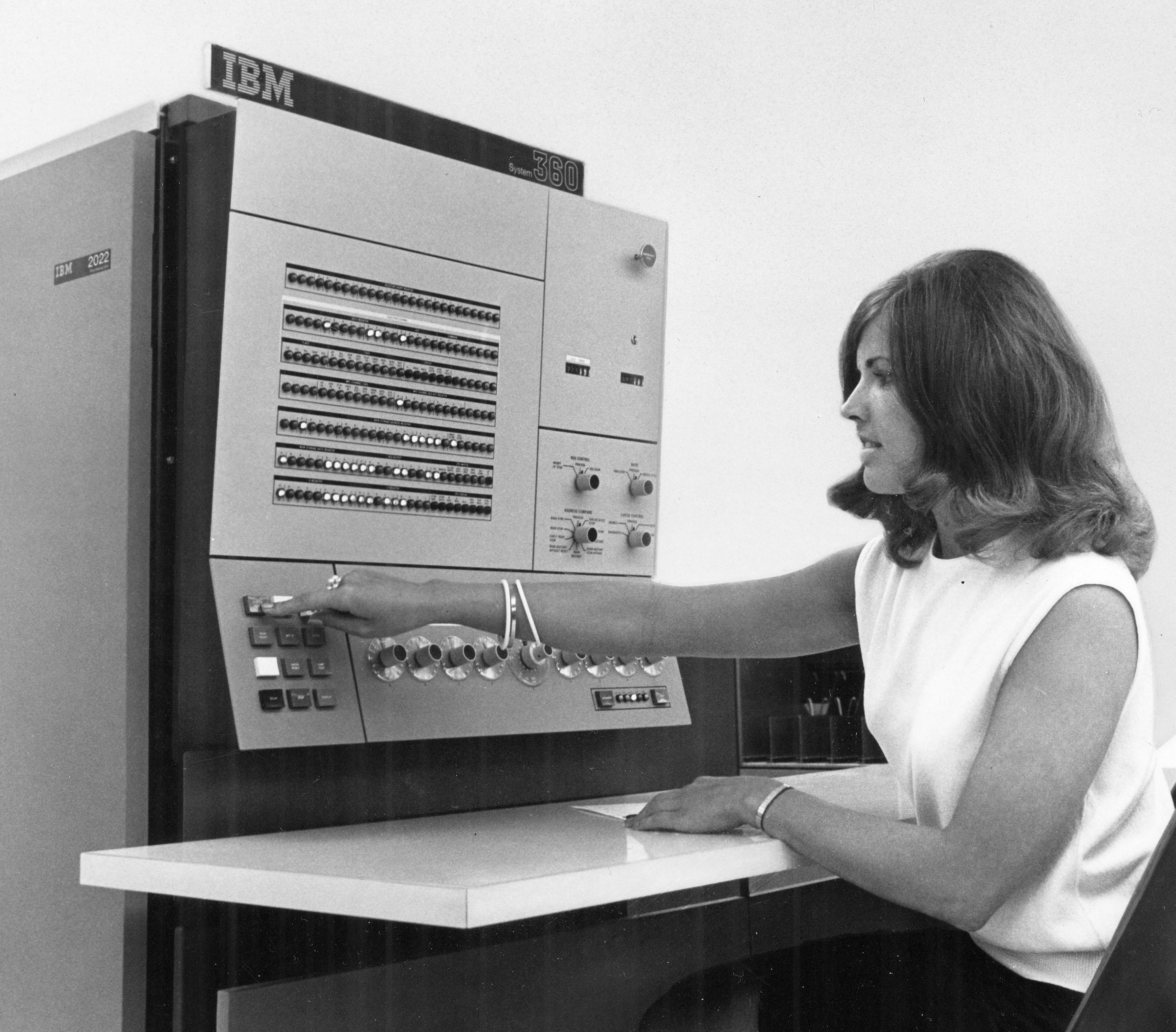
The IBM 360 with operator
FAR OUT!
Up to now you could only connect the same kind of computers, and then only by special-purpose cables and outlets in the same building, unless you could connect your computer to a "modem” (modulator-de-modulator) that converts digital (computer talk) to analog (telephone signaling) and back again when connected to your telephone line. The same protocols and hardware can connect a computer to “terminals,” boxes that can interact with a computer but do not have the smarts to actually process data. Multiple people could use the same computer at the same time (the miracle of "time sharing" that Ida Moya talked about a few years back, but again, only at the same site or by telephone. No matter what, connections were direct: point to point and dedicated. If you wanted to interact with another computer, you had to go to another terminal hooked up, directly or via modem, to the new machine.

An electronic translator of one type of signal to another, the modem
But what if you wanted to access multiple other computers from a single terminal? What if you wanted your computer to talk to another, farflung computer of a different make (ie connect an IBM to a CDC?) Here’s where Dick had to bring out his yellow pad and start writing and drawing.
Dick draws a box on his pad. “One computer, right?”* he says. “And here’s another” as he draws another box to make #2. Now you could connect a single terminal to any number of computers using a newly developed "protocol" for connection. (A protocol, drawn as lines from that word toward the boxes, is a set of rules or instructions about how to do something, and it’s above a program, which is more of a detailed list of steps to use when doing something.) Rather than using specific hardware, the protocol allows computers to "speak" a common language, over phone-lines lines… regardless of computer make or location!
As Dick, the “Nitpicker Extraordinaire,” might have written at the top of his pad (I’m a little fuzzy about how the conversation progressed), the first set of computers involved in the evolution of this network would have belonged to the US Department of Defense as part of its Advanced Research Projects Agency (ARPA), an almost direct result of the success of Sputnik. When NASA (National Aeronautics and Space Agency) was formed in 1958, most of ARPA’s projects and funding were moved to that group. That left ARPA with high-risk or far-out projects, such as computer networking. I can't tell you which computers are involved, nor the details of the protocol (even if I understood them) because they're classified. The main reason for the ARPA network is to test the survivability of communications in the event of a nuclear war. Because if one big computer is destroyed, someone could just use their terminal to contact a different one to complete a process.
Talk to any computer anywhere, without a telephone
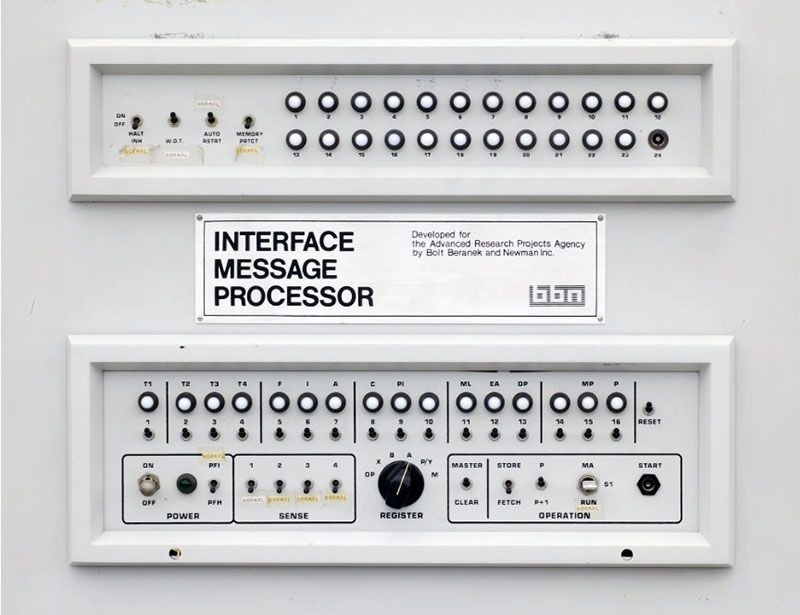
An ARPANET processor
While this exciting technology is limited to the ARPA for the moment, technology tends to spread to civilians eventually. Just think about it! The ARPA network and others like it will make it possible to distribute programs and data widely without printing it out and mailing it. As long as a computer can talk back, you can get and send data from and to it. Even more amazing, the initial transmission speeds showed that messages were being sent to a place 350 miles away 500 times faster than local data was traveling before. It was so fast that the initial speed caused a system crash, followed by a rebuild to handle the velocity, all during the very first transmission. It's not faster than light, but it's a darn sight better than having a computer operator working on far-out national research projects for ARPA fall asleep on his or her keyboard waiting for an answer.
What miracles could you work with a fast, smart, terminal that could connect to any computer in the world? Now that’s exciting!
*To Dick’s other friends. Yes, I know Dick, but I don’t remember any specific conversation like this. Any mistakes or misrepresentations are my responsibility.
[New to the Journey? Read this for a brief introduction!]

![[January 4, 1970] Word for the Day: ARPANET](https://galacticjourney.org/wp-content/uploads/2024/12/arpanetprocess-672x372.jpg)


![[November 1, 1964] Time (sharing) travel](https://galacticjourney.org/wp-content/uploads/2019/10/Corby_IBM_7090-1-620x372.jpg)

